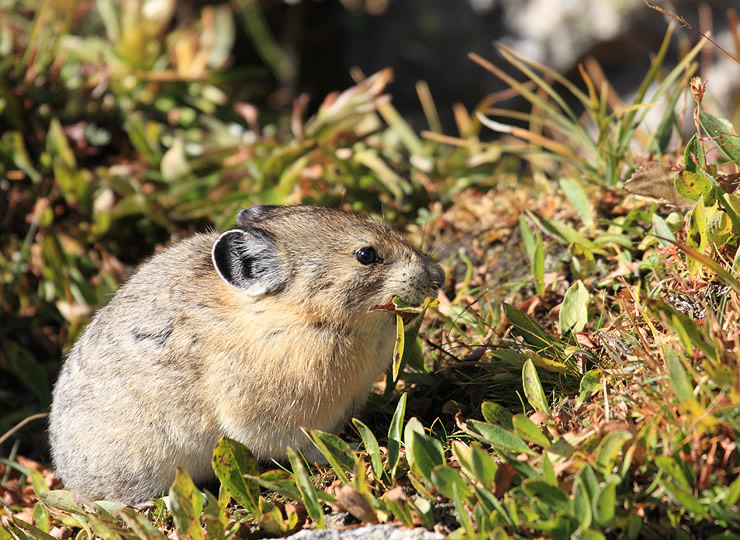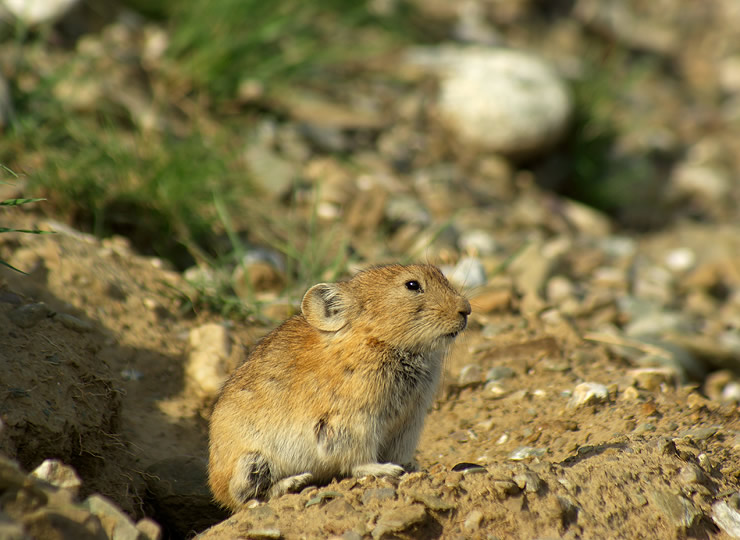Plateau Pika
Ochotona curzoniae

The pika — a small, burrowing mammal related to the rabbit — impacts soil properties and flooding on the Tibetan Plateau.
Range map of the plateau pika

Pikas do not hibernate and are an important food source for predators year-round. Photo credit: iStock/Getty Images Plus
The Tibetan Plateau has one of the highest grassland ecosystems in the world. Over recent decades, its grasslands have declined — due in part to overgrazing (that is, livestock eating too much of the grass). This has also led to an increase in the number of pikas, who thrive in the less grassy areas. Some people thought that the pikas were causing the change in the grasslands. In 1958, the Chinese government began programs to exterminate pikas.

Pikas live in burrows that they dig and maintain over time. Photo credit: iStock/Getty Images Plus
More recently, scientists compared areas with and without pikas to better understand their effects. Areas with pikas have more burrows, large systems of underground tunnels that the pikas dig for shelter. The scientists discovered that pikas’ burrows help the soil hold more water. This can reduce flooding during the wet season and makes it less likely that rivers will dry up at other times of the year.
So, contrary to what people had initially thought, pikas appear to benefit the ecosystem by improving the quality of the soil. Exterminating pikas may thus have unwanted consequences — not only for the Tibetan grasslands but also for human society. About 20% of the world’s human population lives downstream of the Tibetan Plateau. They may be at risk of seasonal flooding and water shortages in the absence of pikas and their burrows.